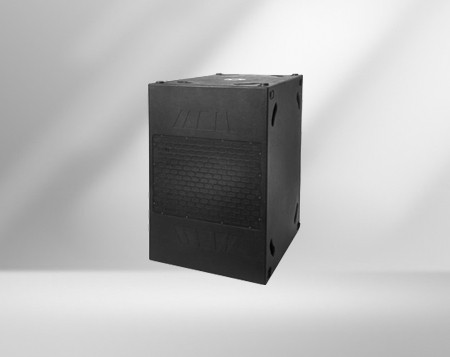source:Industry News release time:2022-02-26 Hits: Popular:Brand bar audio wholesale

The abbreviation of Compressor and Constrainer is a kind of professional audio processing equipment that compresses audio signals to compress and constrain the dynamic scale of audio signals. Its main function is to protect the safety of the power amplifier and speaker system in the speaker system, while avoiding overload clipping distortion, and also to improve and create some professional sound effects. For example, when the original sound with a large volume change is compressed, the volume can be changed smoothly; when the dental component of the human voice is compressed, it can restrain the microphone or the excessive hiss due to improper tuning. Function; A special professional sound effect can be produced when processing certain musical instrument sounds.
In order to facilitate pressure limit regulation, the main function circuit of the compressor has two adjustment horn units, one is the threshold level, the other is the compression ratio, and the adjustment of the two units is so that the dynamic scale of the processed signal is lower than that of the subsequent equipment. The principle of dynamic scale is to give full play to the audio signal processing function of the compressor. There are roughly three treatment plans for the compressor according to different applications, namely, overall compression processing, high-level compression processing, and peak compression processing.
1. All tightening treatment
The overall compression processing is used when the dynamic scale of the signal source blown by the device is greater than the dynamic scale of the device itself, and is mostly used in recording and sound reinforcement occasions. The overall compression ratio is determined by the ratio of the dynamic scale of the program signal to the dynamic scale of the device. For example, the dynamic scale of the sound source of the recording microphone is about 100dB, and the dynamic scale of the equipment is 70dB. At this time, the compression ratio should be positioned at about 1.5:1.
The threshold level of the overall compression is generally set to 8dB below the weakest signal level of the sound source or 10dB above the local noise level. The action time of the overall compression is generally set at the lowest position, and the recovery time can be determined according to the slowness of the sound source pronunciation. , In order to make the weaker part of the tail more natural, it can be set at about 1s under normal conditions.
2. High-level compaction processing
In the sound reinforcement process of many programs, the signal level is higher than the average value by 20dB or more, only 5% of the time is short. In general, professional sound systems for performing sound reinforcement, especially those for pop music concerts, have a relatively large average volume. Professional sound systems generally work at close to full load output and cannot have a dynamic headroom of 20dB. At this time, in order to avoid the impact of the large peak signal with a short time of about 5%, high-level compression processing is often used, and the compressor only compresses the high-level with a short time.
Since it is not all deflation, deflation processing will have a significant impact on the original signal at the inflection point. To deal with this problem, the following methods can be used: one is to prevent frequent replacement of the compressor in the operating/recovery state, the threshold level after the compressor is processed should be determined to be equal to or more than 3dB at the sound source, and the other is Reproduce the original dynamic characteristics of the large loudness signal that has been compressed, and add a suitable sound head during the beginning of the device entering the compressed state. Such processing can make the actually compressed large-loudness segment have a greater loudness effect than this segment in the auditory sense. In order to imitate the auditory characteristics, the time when the compressor enters the contraction state can be adjusted to 5~10ms. In this way, when a large loudness signal appears, it can be overshot for a short interval before tightening.
3. Peak pressure limit processing
When the professional audio equipment is close to the overload distortion condition, the increase of the smile of the input level can cause the signal to be clipped. In order to effectively control the overload distortion of the equipment, peak pressure line processing is often used.
The threshold level of peak compression processing is generally very close to the highest limit of system dynamics. Here, the level of headroom for forming the sound head feel is very small, and its action time is generally set at 150μs, and its compression ratio is generally greater than 10:1, generally between 10:1 and 20:1.
Popular recommendation
PSM 12 POINT SOURCE MONITOR Speaker bar company
2021-07-16EVO 6E KTV audio Merchant
2021-07-16F218 Mk2 Learning audio Vendor
2021-07-14A1 Car stereo manufacturer
2021-07-26SB 210A Bar brand audio Vendor
2021-06-08EVO 7THBar sound company
2021-07-17XQ48 Bar sound bar Merchant
2021-07-26F81 Bar speaker company
2021-07-16Resolution 4S Skeletal Bar use audio Vendor
2021-07-16F315 Mini bar sound Vendor
2021-07-14Resolution 4T Touring Bar use sound Vendor
2021-07-16Minibass 212 Bar bar sound Merchant
2021-06-09TV computer and Bluetooth audio.Conference room audio equipment quotation
2023-04-07The challenge is how to ensure the uniformity of the speakers?
2022-09-08How to tune KTV to make singing "not tired"?Audio brand bar
2022-04-16Shanghai MASTER CLUB bar audio recommended Mateng audio
2022-02-14Improperly tuned crossovers and balancers.KTV audio manufacture
2022-07-07New ferrite material: high-power, low-weight magnetic circuit design
2021-11-29Live demonstration of entertainment audio PK.Sound for bars Vendor
2021-11-24What plan should the government and enterprise audio choose?
2022-03-15How to set and adjust the stage sound according to the scene?
2022-05-17Why do you need an audio engineering company to buy conference audio?
2022-08-13Professional entertainment audio intelligent system knowledge!School audio price
2021-10-16Line array sound effects applied to the sound field of the stage
2021-10-13